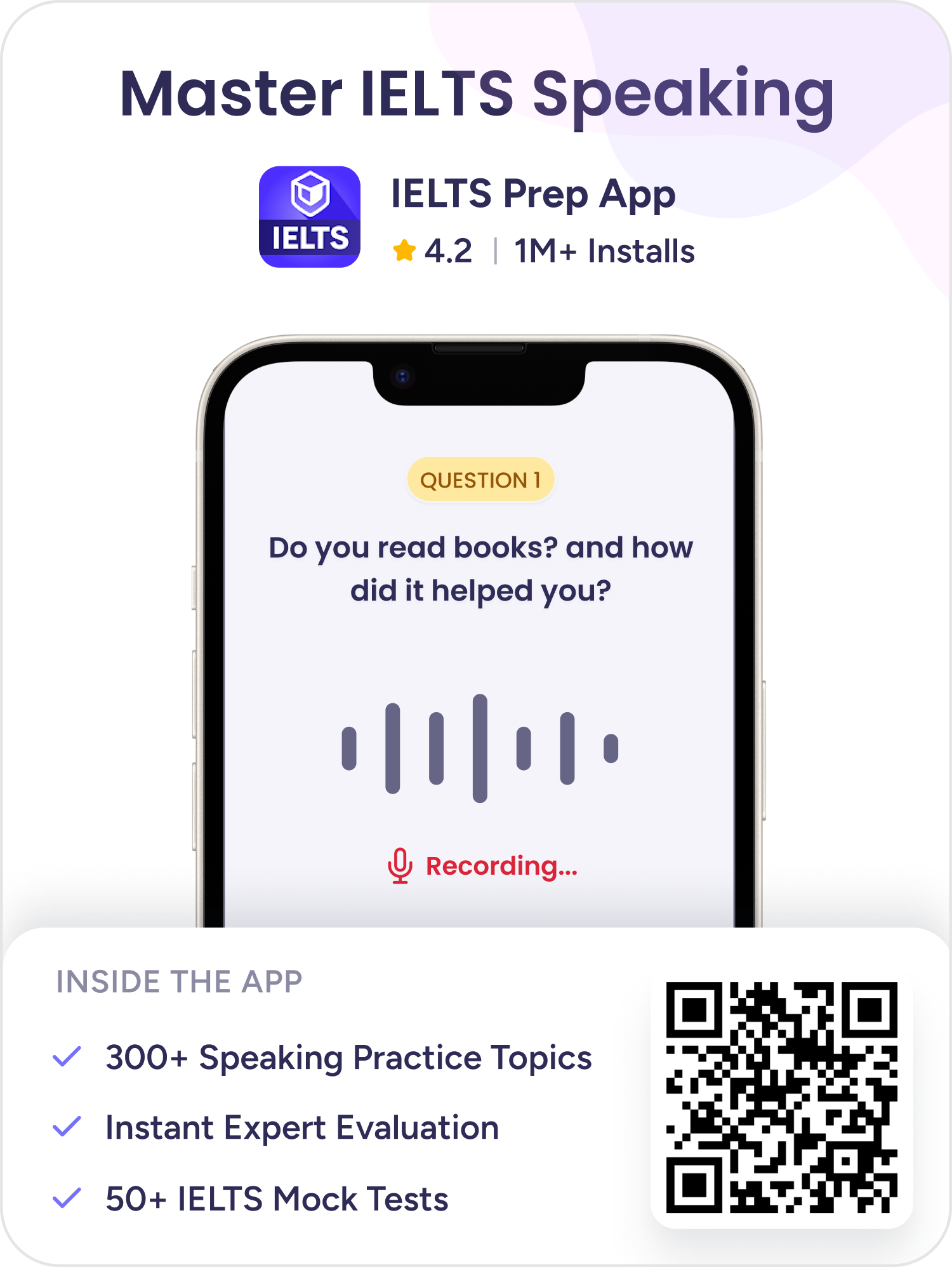Describe something you would like to learn in the future: IELTS Speaking Cue Card
You should say
- What it is?
- How would you like to learn it?
- Where you would like to learn it?
- Why would you like to learn it?
- Explain whether it's difficult to learn it.
28 unique answers with expert feedback
Band 7
00:00
/
00:00
Follow up questions
Follow up questions
What challenges do you think farmers face when adopting poly house management?
How do you think poly house management can impact the environment?
What other skills do you think are important for managing a poly house effectively?
Band 6-7
00:00
/
00:00
Follow up questions
Follow up questions
What specific aspects of French culture interest you the most?
How do you plan to practice speaking French outside of your courses?
What challenges do you anticipate while learning French?
Band 6-7
00:00
/
00:00
Follow up questions
Follow up questions
What specific skills do you hope to learn in New Zealand?
How do you think your work will impact the local community?
What challenges do you anticipate in your journey to becoming a professional?
Practice other cue cards
Band 6-7
00:00
/
00:00
Follow up questions
Follow up questions
Why do you think playing the guitar is a good way to express yourself?
What challenges do you anticipate while learning the guitar?
How do you plan to stay motivated while learning the guitar?
Band 6-7
00:00
/
00:00
Follow up questions
Follow up questions
What specific farming techniques are you most interested in learning?
How do you plan to overcome the challenges of learning farming in a city?
What benefits do you think farming can bring to your life?
Cue 1:What it is?
- Clearly state the skill or subject you wish to learn.
- Provide a brief explanation of what this skill entails.
Example
I would like to learn how to play the guitar. It is a musical instrument that allows you to create beautiful melodies and accompany songs.
Cue 2:How would you like to learn it?
- Mention the method you prefer for learning, such as online classes, private tutoring, or self-study.
- Explain why you think this method would be effective for you.
Example
I would prefer to take online classes because they offer flexibility in scheduling. I can learn at my own pace and revisit lessons whenever I need to.
Cue 3:Where you would like to learn it?
- Identify a specific place or environment where you would like to learn.
- Discuss why this location is suitable for your learning.
Example
I would like to learn at a local music academy. It has a great reputation and provides a supportive environment with experienced instructors.
Cue 4:Why would you like to learn it?
- Share your motivation for wanting to learn this skill.
- Discuss any personal or professional benefits you expect to gain.
Example
I want to learn the guitar because I love music and it would allow me to express myself creatively. Additionally, it could help me connect with others who share similar interests.
Cue 5:Explain whether it's difficult to learn it.
- Acknowledge any challenges you might face while learning.
- Discuss how you plan to overcome these difficulties.
Example
I believe learning the guitar can be challenging, especially mastering the chords and strumming patterns. However, I am committed to practicing regularly and seeking help from my instructor whenever I struggle.
Conclusion
- Summarize your enthusiasm for learning this skill.
- Reiterate how it aligns with your personal goals.
Example
In conclusion, learning to play the guitar is something I am very passionate about. It aligns with my love for music and will help me grow both personally and socially.
Following this structure will ensure you cover all the essential points while providing a clear and engaging response to the cue card topic.
Tips to answer this Cue Card
1: Vague Descriptions
Using vague language can make your answer unclear. It's important to provide specific details about what you want to learn to engage the listener.
Tip
Use clear examples and specific details to describe what you want to learn, how, and why.
2: Lack of Structure
Failing to organize your thoughts can lead to a confusing response. A structured answer helps the examiner follow your ideas easily.
Tip
Follow the cue card prompts in order to create a logical flow in your response.
Ignoring Personal Motivation
Not explaining why you want to learn something can make your answer less compelling. Personal motivation adds depth to your response.
Tip
Clearly articulate your reasons for wanting to learn and how it relates to your personal or professional goals.
IELTS Cue Cards asked last week
Reported by Leap students who gave IELTS
All Answers
Here are all the answers by real-users practicing speaking for IELTS Cue Cards on our IELTS Prep App.
Band >7
Band 7
Band 6-7
Band 6-7
Band 6-7
Band 6-7
Band 6-7
Band 6-7
Band 6-7
Band 6-7

Explore
473 Cue Cards

Personal Experience
121 Cue Cards

Describing People
66 Cue Cards

Travel
47 Cue Cards

Personal Development
45 Cue Cards

Hobbies/Interests
44 Cue Cards
Environment/Culture
39 Cue Cards

Tech/Media
27 Cue Cards

Education/Work
19 Cue Cards

Social Issues
19 Cue Cards

Describe An Object
16 Cue Cards
Business/Shopping
16 Cue Cards

Food/Cooking
8 Cue Cards
Fashion
6 Cue Cards
Get the IELTS Prep App
4.2
1M+ Installs
Get the IELTS Prep App
4.2
1M+ Installs
Get the app link on your phone
Or download app from





